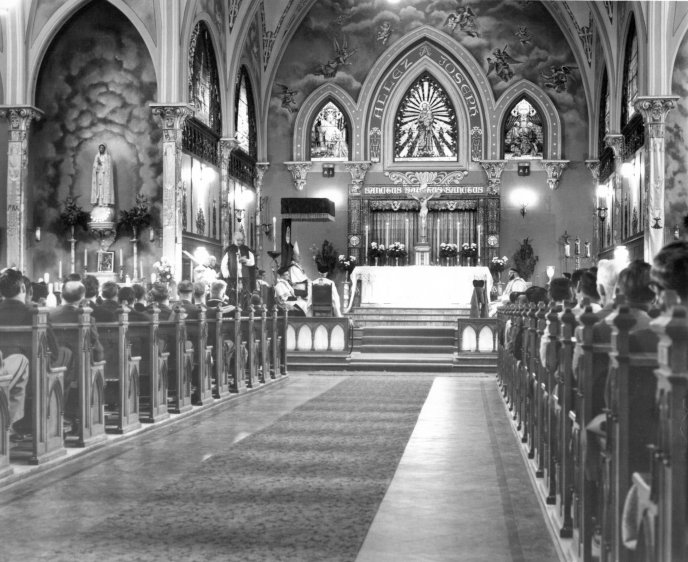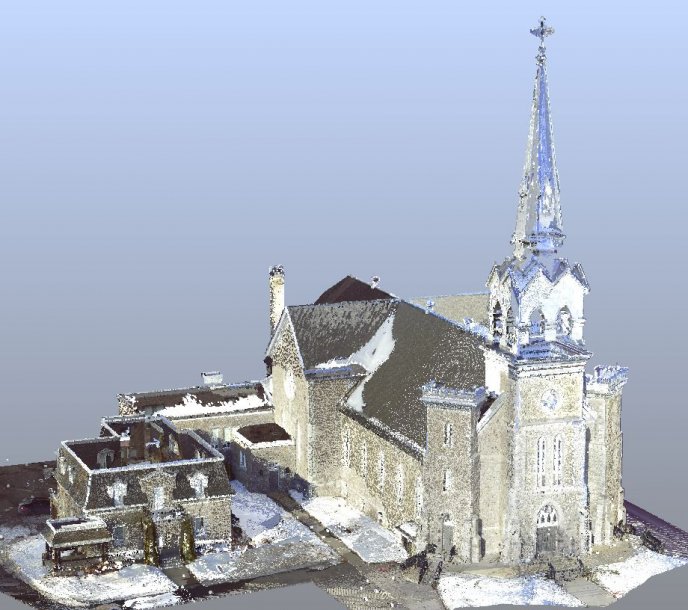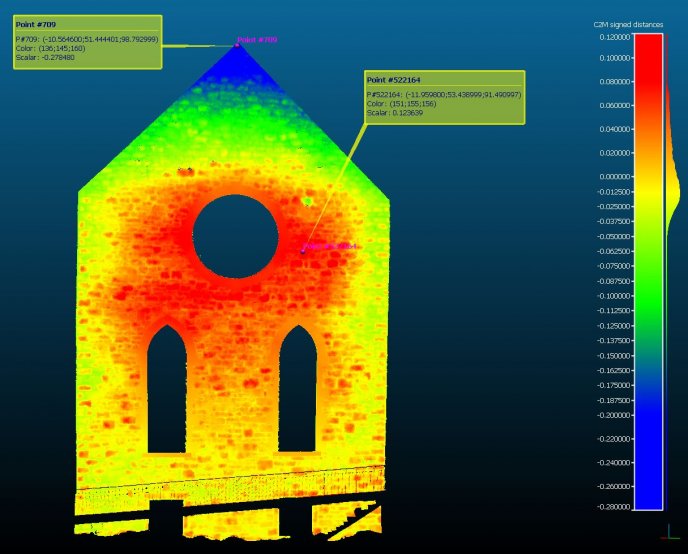Location: Orléans, Ottawa, Ontario
Date of Completion: 1922
Architect: Canon Georges Bouillon
Nominated by: Marie-France Lalonde, MPP (Orléans)
With its gleaming tin-clad bell tower presiding over what was once a rural village, St-Joseph d’Orléans stands as a testament to the franco-ontarien roots of this Ottawa suburb – a physical manifestation of Ontario’s largest minority language group in one of the province’s most vibrant French-Canadian communities.
À la canadienne
Back in the 1880s – when the first stone church was built in Orléans – this eastern Ontario parish had 43 anglophone and 1312 francophone families, with many of them tracing their roots back to Québec. It is not surprising then that the architecture of their first stone church recalled those of Ile d’Orléans – long considered the birthplace of francophone culture in North America.
This first church featured a stoic but elegantly proportioned facade, accentuated by two small turrets and topped off with a slightly set-back steeple. Unfortunately, all that remains of it are some of the statues it once housed. The building was demolished in the early 1900s.
The first stone church of Orléans (right) with many similarities to the early churches of Ile d'Orleans such as Eglise St-Pierre (left) (1734).
Photo Credit: Image of the first church courtesy of Paroisse St-Joseph d’Orléans
The second stone church – the one that still stands today – was completed in 1922 and exhibits a different type of facade, one shared across many anglophone and francophone churches in the Ottawa Valley. These facades are notable for their monumentality with a large central tower and a facade wider than the building behind it. Interestingly, St-Joseph d’Orléans is one of the few Catholic churches in the region to incorporate elements of military architecture with crenellations topping the two smaller towers flanking each side of the facade – an element more commonly found in Protestant churches. Perhaps this is a reflection of the bilingual nature of the parish, which served both its francophone majority and its anglophone minority until the 1970s (when a separate anglophone church was built).

Interior of the second (and current) stone church of Orléans before the 1973 fire that destroyed much of its interior decoration.
Photo courtesy of Paroisse St-Joseph d’Orléans
While its layout and facade may speak to a shared history amongst regional churches, its materiality is distinctly French-Canadian. The rough-cut stone walls and its tin-clad bell tower and spire are all part of a shared architectural language amongst many French-Canadian buildings.
Today, the church stands as a reminder of the region’s Franco-Ontarian origins and still serves Orléans’ significant francophone community – with more than 30 per cent of the region’s population identifying as French-Canadian and about half the population being fully bilingual.

3D digital model produced with LiDAR.
Image courtesy of John G. Cooke & Associate
Maintaining Our Heritage
While stone buildings exude a sense of permanence, the reality is that all buildings – no matter their construction technique – require maintenance in order to ensure their continued survival. Over the years, successive preservation efforts have been undertaken to ensure the building’s structural integrity. These have been aided by the use of state-of-the-art technology such as LiDAR – a remote sensing method that employs light in the form of pulsed laser to generate precise, three-dimensional information – as well as age-old traditions such as repointing lime mortar joints.
 The current interiors under renovation.
The current interiors under renovation.
Image courtesy of Paroisse St-Joseph d’Orléans
In 1973, a fire destroyed much of the interior ornamentation at St-Joseph d’Orléans – including numerous murals that decorated the nave. Efforts are currently underway to return the interior of the church back to its former grandeur, including refinishing carpentry, installing new flooring and changing the lights, with all fundraising efforts being led by volunteer parishioners.
This combination of state-of-the-art technology, time-honoured traditions, and volunteer commitment will ensure St-Joseph d’Orléans continues to serve its community for many years to come in a building that has become an important cultural marker in a rapidly changing region.
Image courtesy of Paroisse St-Joseph d’Orléans
This post forms part of our World Architecture Day Queen’s Park Picks 2018 series in which we asked Ontario’s Members of Provincial Parliament to nominate a prominent building, past or present, in their riding for a chance to learn more about it. Check out the rest of the series to learn more about great buildings across the province!
The OAA would like to thank the parish of St-Joseph d’Orléans and John G. Cooke & Associates Ltd. for the information, images and drawings that made this blOAAg post possible.
Additional Sources
Comité du livre du 150e anniversaire d’Orléans, Orléans, 150 ans d’histoire. 1860-2010.
Bennett, Victoria. “Early Catholic Church Architecture in the Ottawa Valley: An initial investigation of nineteenth century parish churches,” in Canadian Catholic Historical Association's (CCHA's)
Historical Studies, 60 (1993-1994), 17-42., Accessed electronically:
http://www.cchahistory.ca/journal/CCHA1993-94/Bennett.pdf